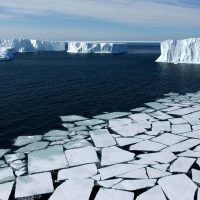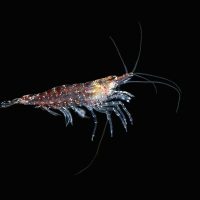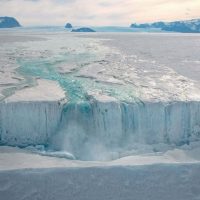ANTARCTIC PENGUINS
Meet the polar penguins
There are 18 species of penguin on the planet, and seven of them live in the Antarctic. Follow the links below to learn about each penguin species, from their unique nesting habits to where they breed and feed.

Emperor Penguin (Aptenodytes forsteri)
Emperor penguins are the largest penguins on earth, and the only penguin species to breed on the ice. They spend all of their lives in the Antarctic, and are the deepest-diving bird on the planet.

Adélie Penguin (Pygoscelis adeliae)
Adélie penguins live and breed exclusively in Antarctica and the Southern Ocean. A member of the brush-tailed family of penguins, they nest on rocky beaches, building nests out of pebbles.

Gentoo Penguin
(Pygoscelis papua)
Common across the subantarctic and Antarctic Peninsula, gentoo penguins are the fastest-swimming penguin on the planet. They are a member of the brush-tailed penguin family, and are closely related to Adélie and chinstrap penguins.

Chinstrap Penguin
(Pygoscelis Antarcticus)
Chinstrap penguins are most commonly found on subantarctic islands, although some colonies can be found on rocky Antarctic beaches. Their key identifying feature is the distinctive black line under their chin, which earns them their name.

Macaroni Penguin (Eudyptes chrysolophus)
Macaroni penguins are a member of the crested penguin family. They may be the most populous penguin species on the planet, however, their numbers are declining and their conservation status is listed as ‘vulnerable’.

Rockhopper Penguin
(Eudyptes chrysocome)
The southern rockhopper penguin is the smallest penguin in the genus Eudyptes. They can be identified by their pale yellow crests and distinctive red eyes.

King Penguin
(Aptenodytes patagonicus)
King penguins are the second-largest penguins on the planet. They closely resemble emperor penguins, but they are rarely found in the Antarctic. Instead, they live and breed on subantarctic islands.
ANTARCTIC PENGUINS
Protecting Antarctic penguins
Thanks to the efforts of the global conservation community, Antarctic penguins receive vital protection under several international agreements.

Commission for the Conservation of Antarctic Marine Living Resources (CCAMLR)
Adopted in 1980, CCAMLR is an international commission responsible for the conservation of ‘living marine resources’ in the Southern Ocean.

Protocol on Environmental Protection to the Antarctic Treaty
The Protocol on Environmental Protection to the Antarctic Treaty (also known as the Madrid Protocol, or simply the Protocol) is an international legal commitment to protect the Antarctic.

Marine protected areas
Marine protected areas (MPAs) are scientifically proven to be the most effective way to limit damage caused by human activities and support vibrant and healthy ocean ecosystems.

International Union for Conservation of Nature (IUCN)
The IUCN is a network of more than 1,300 members including international governments, non-governmental organizations, scientific institutions, and Indigenous communities.
“We have seen multiple breeding failures for Adélie penguin colonies, habitat loss throughout the region, a concentrated krill fishing effort, and the warmest Southern Ocean temperatures ever recorded. Scientists have been clear that MPAs are needed to make a warming and acidifying ocean more resilient.”
Andrea Kavanagh, Director of Antarctic and Southern Ocean work at The Pew Charitable Trusts
Challenges facing Antarctic penguins
Despite the valuable protections already in place, penguins face many threats. Several of their populations have been designated ‘vulnerable’ to extinction. Read on below to learn about some of the challenges polar penguins face today.

ANTARCTIC PENGUINS
You can help
ASOC has been working to protect polar penguins for over 40 years.
Join us today as we continue to lead the international conservation community in this important work.
ANTARCTIC PENGUINS
Discover more
Like to learn more about polar penguins? Follow the links below to discover the unique characteristics of each penguin species, from nesting to breeding and feeding.
Now that you’ve learned about penguins, read on to discover more about extraordinary Antarctica.
 ASOC
ASOC











